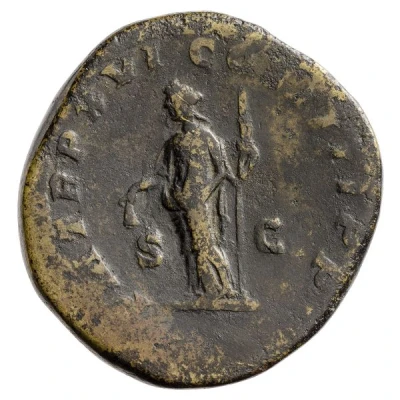Sestertius - Caracalla P M TR P XVI COS IIII P P S C; Libertas
213 year| Bronze | - | - |
| Issuer | Rome › Roman Empire (27 BC - 395 AD) |
|---|---|
| Emperor | Caracalla (Marcus Aurelius Antoninus Caracalla) (198-217) |
| Type | Standard circulation coin |
| Year | 213 |
| Value | 1 Sestertius = ¼ Denarius |
| Currency | Denarius, Reform of Augustus (27 BC – AD 215) |
| Composition | Bronze |
| Shape | Round (irregular) |
| Technique | Hammered |
| Demonetized | Yes |
| Updated | 2024-10-06 |
| Numista | N#273855 |
|---|---|
| Rarity index | 100% |
Reverse
Libertas, draped, standing left, holding pileus in right hand and rod in left hand.
Script: Latin
Lettering: P M TR P XVI COS IIII P P S C
Translation:
Pontifex Maximus, Tribunicia Potestate Sexta Decima, Consul Quartum, Pater Patriae. Senatus Consultum.
High priest, holder of tribunician power for the 16th time, consul for the fourth time, father of the nation. Decree of the senate.
Comment
Source:Online Coins of the Roman Empire (OCRE)
Interesting fact
One interesting fact about the Sestertius - Caracalla coin is that it features the image of the Roman goddess Libertas, who represents freedom and liberty, on its reverse side. This is significant because it highlights the importance of individual freedom and the idea of liberty during the Roman Empire, which was a key aspect of Roman culture and society. Additionally, the coin's design and imagery would have been carefully chosen by the Roman authorities to convey specific messages and ideals to the population, making it a valuable tool for understanding the cultural and political climate of the time.

